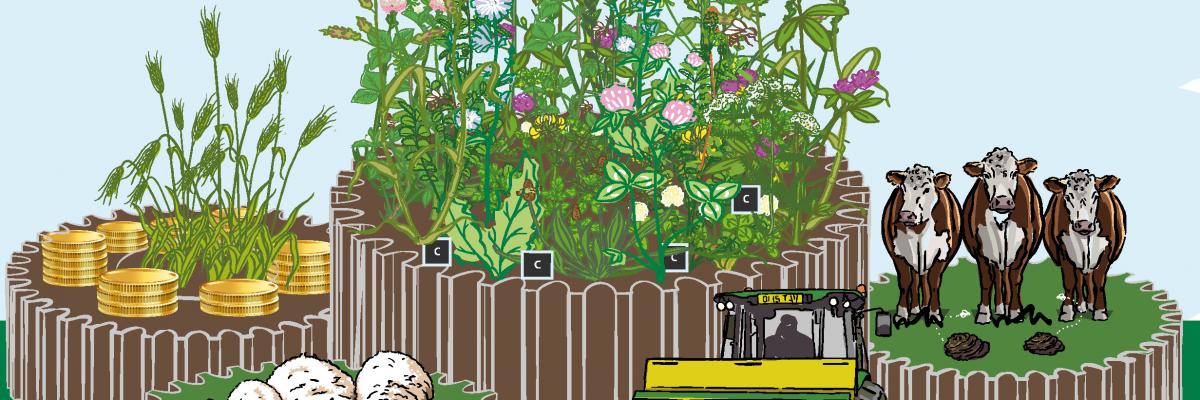

The Herbal Ley Farming System
Why it's lasted over 100 years
Download the PDF
The guide features a foreword by R. Newman Turner, son of pioneering farmer Frank Newman Turner, who described herbal leys as "my manure merchant, my food manufacturer and my vet all in one." The guide shows how this increasingly popular system of farming, using mixtures of grasses, legumes and herbs, offers a range of benefits: free fertiliser, natural mineral rich feed, natural drought resistance, natural worm control, high yields, carbon capture and environmental benefits. It also explains how the ley fits into a rotation, how to sow and manage the ley; how to use it for grazing and cutting; how to introduce it onto an arable farm and overseed to improve old grass. There is also a useful plant identification guide, and a series of case studies from farmers who have successfully used herbal leys for a variety of purposes.
Some of the key benefits highlighted in the guide:
- Replace costly artificial nitrogen fertiliser.
- Free minerals for animal and human health.
- Reliable grazing on dry soils.
- Prevent drug resistant nematodes.
- Different plants grown together yield 50% more than their average.
- More deep-rooting leys, more carbon sequestration, better farming.
With sowing and managing herbal leys, the key to success is shallow sowing and plenty of rolling. Information in relation to this is centred around:
- How old grass can be improved by stitching in seeds from a herbal ley.
- Herbal leys are traditionally grazed.
- Herbal leys can also be tailored for cutting.
- Bringing livestock back into the arable rotation.
- Diverse leys create habitats for wildlife and help manage water.
(Header image credit: Cotswold Seeds)
